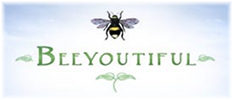Bunkers and Pagodas on the Perfume River (Hue, Vietnam): In Which Ezra Has a “Culturally Broadening Experience.”
July 31, 2012 in Asia, Travelogue, Vietnam
I’ll never again consider rice in the neutral palate of colours.
My experience with the grain until now has been in it’s dead and nutritional form, dry and opaque in some shade of cream to tan. Rice is, in fact, a living emerald in every shade from jade to peridot. I closed my eyes and listened to the nodding heads of developing grains whisper in soft Vietnamese to one another as we rode the dirt track between paddies.
Men in faded communist issue green shirts and pants rolled to their knees swatted at water buffalo, calf deep in mud; their faces hidden beneath their conical woven hats.
Ducks paddled placidly in the canals between fields gobbling and quacking.
Grandmothers with naked babies splashed in the stream water while mothers with tired looking backs washed clothes on the rocks.
Old men lay in buttonless tunics on the wooden side boards of a bridge built in 1776, snoozing in the shade.
Long boats slipped between villages filled with fishing nets and bamboo poles.
The black dragon’s back of mountain ridges that separates Vietnam and Laos watched from a distance, and I’m pretty sure I heard the dragon chuckle.
The children chattered to one another over the roar of the bike engines, shouting back and forth as we wound through traffic and out into the countryside, past pagodas and rice paddies, markets and mud bogs. It’s a fearsome thing to place all of your eggs in one basket and trust the lives of your babies to the hands of men who don’t love them. I pushed those thoughts from my mind, took a deep breath of the hot, green air and put my faith in their happy shouting and the experience of our drivers.
There is no way to sum up today, really.
We saw the tombs of Tu Duc and the last emperor to die in Vietnam, in 1925. The only thing I can say about those places that will come close to describing the grandeur is to tell you that the ceramic bas-relief work here makes the best mosaics of Ravenna and Rome look like a third grade art project. I’m not exaggerating.
We stopped in a sandalwood and cinnamon scented town to watch young women rolling a paste of spices and sawdust onto the thinnest of sticks: They were making incense.
We stood atop a hill overlooking a lazy bend in the Perfume River and talked with our guide, Mr. Hue, as he discouraged the kids from exploring inside the American bunkers on the hill, “There might be snakes in there!” He admonished them. He told us about the Vietcong raids on that rise and how they would only man the post in the daytime because at night it became an ambush. He told us about his father, who left when he was just five months old to fight in the war and never came home. They don’t know how he died, or where, he simply disappeared, like thousands of other Vietnamese. His mother moved to Hue, where her family was, to have help in raising him, and that’s why his name is “Hue.” He’s fatherless, and from this town.
He told us about the imperial dynasties of Vietnam and the wars fought on this soil:
“First, the Chinese were fighting us for a thousand years, then the French, then the Americans. Now we are worrying about the Chinese again! If they fight then all men can be called to go to fight, until they are 55 years old.” We were wowed. That’s quite a draft pool. “Every man does military service, three years when I was young, but now only one and a half, that is what my sons have done, one and a half. Then, after, that you have a good job. You go to military service, then you have good job, and maybe the government not need you later, maybe there be peace for my sons and for me,” he’s smiling while he explains.
Everywhere we go people exclaim, “Wow! Big Fam-a-ree!” We always giggle and are never sure if they mean the number of kids we have or how tall we all are. “In Vietnam, we have only two children,” Mr. Hue explained, “If you have more, the government give you bad job. Your status go much lower. One or two children, this is good, you have good job, you be wealthy. More children, less wealthy. Many children, very poor. But your family, good! Big family good!” He reassured us.
“So is it like China then, where the government controls the family size?” I asked, with trepidation.
“Yes… no… maybe little bit,” he smiles, “Like China, we try not have too many peoples. Not like China, we no kill the babies. Why people would kill babies? This is terrible! Vietnamese never kill the babies.” His forehead is knit. “The Chinese government, very bad. The Chinese people, they think very different from Vietnamese. Not good. We worry about China.” We agree. Killing babies seems universally bad. Other parts of the world worry about China too.
And then, the tiniest of Grandmothers is tugging at our sleeves.
She’s dressed in purple satin with her glossy black hair, just dusted with silver, drawn back into a neat roll. She herds the children together and begins to teach:
“This is rice. This is the knife we use to cut rice. We collect it like this, then hold it, flip the knife and use the sharp side to cut it. This machine is for removing the hulls, like this… now you try. Now we toss the grains to separate the chaff. This is how we grind the flour, see, round and round, and we sing…” she sings.
Tugging us onward she explains:
“This is the plow we use with a water buffalo to pull it to prepare the paddy. We wear this cape of reeds while we work to keep us cool and the flies off. Then we use this instrument to shovel water from the canal in to the paddy, and this machine, which I pedal like a bike to move water out of the paddy.”
She shows us how to hang a baby in a basket and rock it and sing.
We understand everything. She is an excellent teacher. The children ask questions. She answers them.
She does not speak one word of English. The entire lesson is mimed and given in carefully enunciated Vietnamese. We don’t speak a word of Vietnamese. We smile, we nod, we mime in return. She laughs. She smiles. She pretends to switch Elisha’s bottom with her water buffalo switch. He pretends to cry. We all laugh some more.
It’s the best museum we’ve been to in ages and when she’s done teaching we all sit down to share a drink and let the boys continue to grind rice and separate chaff. There’s a basket with hard green nuts and some leaves in it, next to a pot of white paste on the table.
“Betel,” she says. Ezra hears her and comes running.
Ezra read a book entitled Escape from Saigon in preparation for our trip. It’s the story of the airlift of many of the Eurasian children from Saigon at the end of the Vietnam War and their adoption by American families. It follows the true story of one child. In this book Ezra learned about betel nut and has been on the hunt for one from the moment we landed in Hanoi.
“Mom, in the book the grandma chews them. It stains your teeth a reddish black but it’s supposed to give you fresh breath and be really good for your teeth and gums. Can I try one?”
He is towering over the little grandma now pointing at the basket of nuts and at his own chest. “I try one?” He asks slowly and loudly.
She cuts a section of leaf, smears a long stripe of lime (the mineral, not the fruit) down the center of the leaf and slices off a section of nut with a razor sharp knife. She folds the leaf carefully, wraps it around the nut and holds it up for him to see. They lock eyes. He smirks. She pops it in her mouth and starts chewing, making big eyes at him.
Ez folds his eyebrows in, and tries again. He points at her mouth, at the nuts and then taps his chest. “Me! I try one?” She looks at him and laughs, red juice staining her lips and running out of her mouth in a rather frightening way. He laughs and bobs his head, the universal sign for, “Yeah, you got it! We’re feelin’ each other here!”
Grandma shaves off a section of leaf, applies a swath of lime, wraps a piece of nut in it and hands it up to Ez. By now, every Vietnamese within hearing has been called to come watch the American kid chew a betel wad. They are clearly encouraging him across the language barrier.
Gamely, he pops it in and starts chewing. His face is blank. We can’t tell what he’s thinking. We ask, he still doesn’t tell us. Then he gets a slightly glazed look, “Are you okay boy?” More than a few people wonder in various languages. He bobs his head, drooling red out the same side as Grandma. He chews. She claps and throws back her head, howling in laughter. Ezra is now “her boy” and he is held tightly to her side while they chew together and eventually spit into a plastic bag. She is proud. He is proud. Everyone else is proud. We are laughing.
The men are talking among themselves and laughing. Eventually Mr. Hue translates: “You know, there are many grown men in Vietnam who cannot chew this leaf. It makes you sweat and your head swim and your eye glaze up. Old people often chew it, but you must be very strong. Your boy! Good job! He is very strong!” By now Ezra is well into his second chew with Grandma and I ask, “So, is this like a drug?!” “Yes, yes, like a drug, only very good for you.”
Before you start penning hate mail let me announce loudly and clearly that we are not advocates of drug use by children in spite of our misadventures with the differences in aroma between marijuana and hashish, in Amsterdam, heroine needles in Prague, cocaine, in Central America, and most recently opium in Thailand. Ezra has chewed his first and last wads of betel until he’s on his own insurance plan and in spite of what we’ve since learned about it’s carcinogenic and stimulant properties I hardly think that two chews will kill him. He managed to remain seated on the bike the whole way home and he’s not passed out in a stupor under a bridge yet.
We’ll chalk it up to a “culturally broadening experience!”
For the record, chewing betel is NOT good for you!









 RSS - Posts
RSS - Posts


























That is hilarious! I hate the smell of betel nut… bad India memories. :>
Apparently, “Escape from Saigon” did not expect children to try this at home. lol.
[…] We stare history in the face: […]